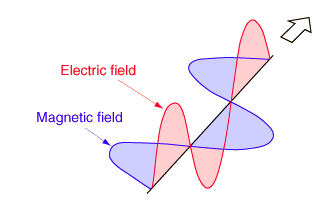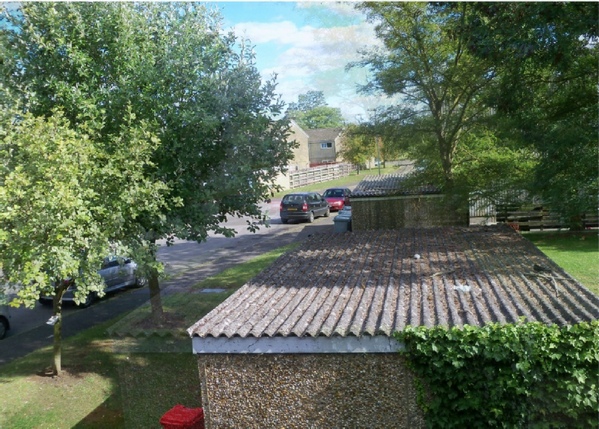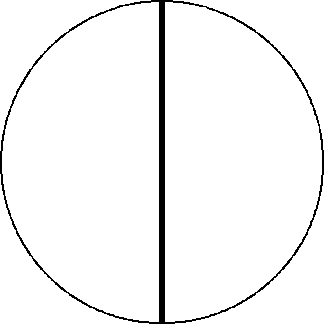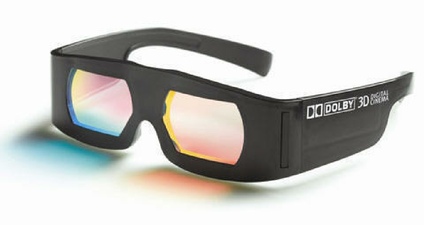Glossary
of 3D Technology
Active 3DTVs
This uses glasses with battery powered LCD shutters which are synchronised with the display so that alternate images are displayed for each eye. The picture for one eye is displayed and then the other eye. The glasses are synchronised so that the LCD shutters block out the picture for the eye for which the picture is not being displayed. This technology is primarily used for 3DTVs, particularly the earlier models, although a few cinemas also use this system under the ExanD 3D brand name. Unfortunately there is as yet no standard active 3D glasses and each brand of active 3D glasses will only work with a 3DTV of the same brand. The advantages of this system are that there is very little ghosting and the images are displayed at full resolution. The disadvantages are that the glasses are big, expensive, heavy, have a battery liable to become discharged in the middle of a film and the refresh rate of the display must be halved compared to 2D display. Note: Optics 3D Are not developing any products for this system at this time due to the complexity of the glasses and the lack of a standard. We may decide to look further into this in late 02013. Some examples of active 3DTV glasses are shown in figure 1.



Figure 1: Examples of active 3D glasses
Anaglyphs
This is now a largely obsolete technology which uses glasses with coloured lenses to achieve the 3D effect. One eye would see one part of the red/green/blue spectrum and the other eye the other eye would see another part. For example, with the red/cyan glasses, the left eye would see the red light and the right eye would see the green and blue light. The advantages of anaglyphs is that it is cheap and can be used in cinemas and TV without any modification. The main disadvantage of anaglyphs is colour distortion. Although all colours can be seen, because they are each only seen in one eye they often appear distorted. A certain amount of ghosting can occur, particularly into the red image. Anaglyphs are not generally used in cinemas anymore, but can be seen on video sharing sites such as youtube etc. Some examples of anaglyph glasses are shown in figure 2 and an image in figure 3.

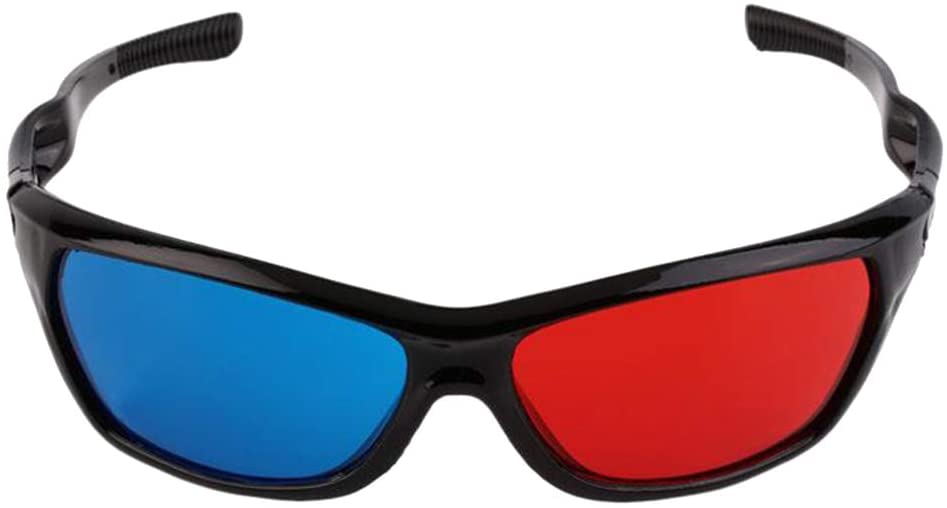
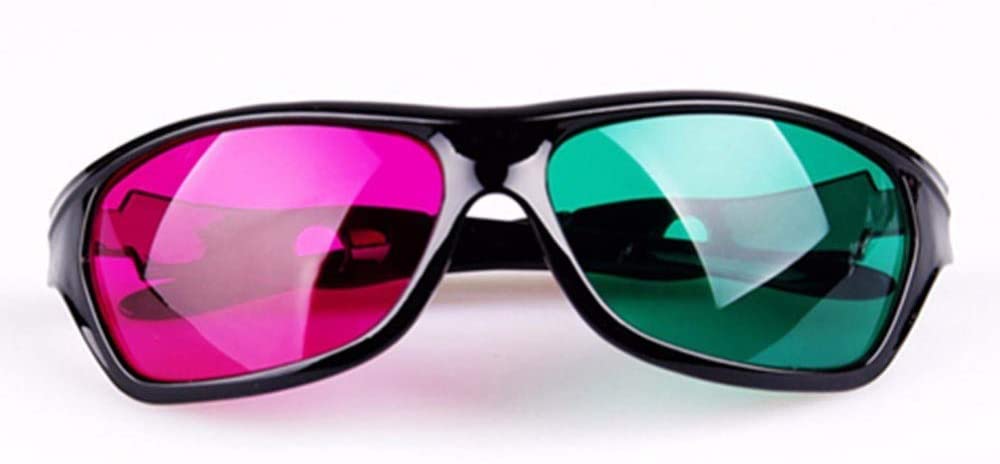
Figure 2: Samples of anaglyph Glasses
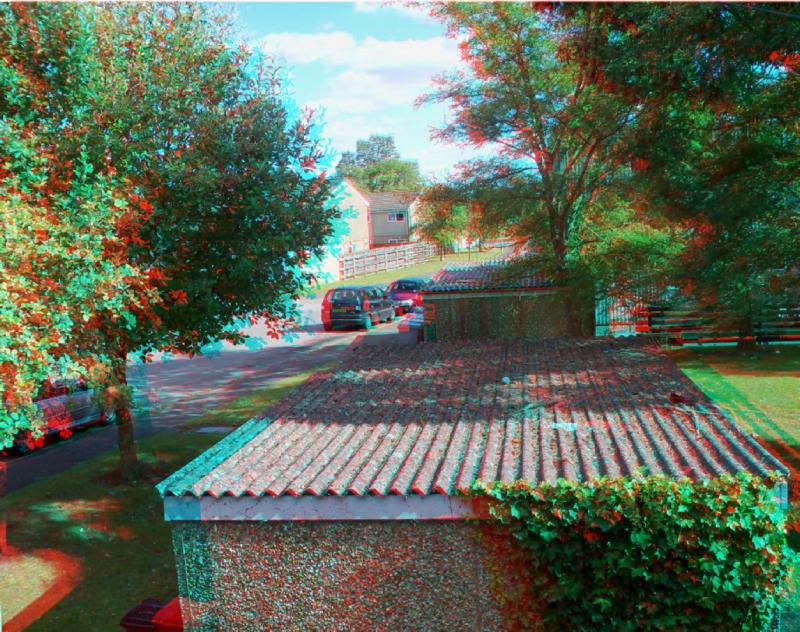
Figure 3: An example of an anaglyph image.
Circular Polarisation
Light consists of perpendicular waves in two components, electric and magnetic fields and so they are also known as electromagnetic waves (figure 3). If these waves are out of phase by 90°, then the light is said to be circularly polarized (figure 4). If you could see the tip of the electric field vector, it would appear to be moving in a circle as it approached you. If while looking at the source, the electric vector of the light coming toward you appears to be rotating anticlockwise, the light is said to be right-circularly polarized. If clockwise, then it is left-circularly polarized light. The electric field vector makes one complete revolution as the light advances one wavelength toward you. Another way of saying it is that if the thumb of your right hand were pointing in the direction of propagation of the light, the electric vector would be rotating in the direction of your fingers.
Circularly polarized light may be produced by passing linearly polarized light through a quarter-wave plate (plate of material which has a different index of refraction) with a refraction angle of 45° to the optic axis of the plate. Electomagnetic radiation and circular polarised light are illustrated in figures 4 and 5.
Figure 4: Electromagnetic radiation Figure 5: Circular polarised light
Dolby 3D
This is a chromatic system which uses one set of red, green and blue light for one eye and another set of red, green and blue light for the other. The projector projects each set alternately and the glasses have lenses which only allow the correct set of lights through. The advantages of this system are that an expensive silver screen is not needed, the glasses are light weight and the image is very good with very little or no ghosting. The disadvantages are that the glasses are more expensive that the other passive 3D glasses and the filters are not very tough. For these reasons, like with ExanD 3D, cinemas lend the glasses to the audience who then return them for cleaning and reuse. Some Dolby 3D glasses are shown in figure 6 along with an illistration (figure 7) which shows the principle behind Diolby 3D glasses.
Figure 6: Dolby 3D glasses Figure 7: How Dolby 3D images are generated
ExanD 3D
This uses same type of glasses with LCD shutters as used with active 3DTVs and work in the same way. See active 3DTV above. Because of the high costs of the glasses, instead of selling them, the cinema lend them out to the audience who return them after the film has finished. They are then collected and washed so that they are ready for the next user.
Click here to see a map showing the locations of ExpanD 3D cinemas. ExanD 3D glasses are shown in figure 8.
Figure 8: XpanD 3D glasses
Ghosting
This is were one image bleeds into another so that the viewer sees double. It is due to the filter or polariser not being completely efficient so that they let through some of the light from the other image. This can be particularly evident when the viewer tilts his or her head whilst watching an Imax 3D film. It can also be seen with bright parts in RealD and dark bits in anaglyph images which use red lenses. An image with some ghosting is demonstrated in figure 9.
Figure 9: An image with some ghosting
Infitec Dualcolor3D
Chromatic system used under licence by Dolby 3D. See Dolby 3D.
Imax 3D
Most Imax 3D cinemas use a linear polarisation system although a few now use the ExanD 3D system. The linear polarisation system was invented in 1936 and was used mostly in America during the first wave of 3D films in the 1950’s. It uses light polarised at either 0° or 45º for the left eye and either 90° or 135º for the right which is projected simulataneously onto the screen. The glasses filter out the unwanted image, illustrated in figure 10. It has largely been super seeded by rotational polarisation systems used in most cinemas. The advantages of this system are that the glasses are cheap, light and the system is off patent. The disadvantages are that an expensive silver screen is needed to retain polarisation and the users have to keep their head upright to reduced the amount of ghosting which can become uncomfortable after a long period of time. Another difference is that Imax 3D uses two reels of film, one for each eye, whereas other systems us alternating images for each eye on the one reel. This system is also used in some museums which have a 3D cinema, such as Bletchley Park, Hendon Air Museum and Leicester Space Centre. Some Imax 3D glasses are shown in figure 11.


Figure 10: Linear polarised light. Figure 11: Imax 3D glasses
Linear Polarisation
Light is made up of packets called photons. These photons can be considered as flat waves. When looked end-on the waves from unpolarised light appear as lines of all angles crossed in the middle (figure 12). When polarised only light in one direction is allowed completely through. Light perpendicular is completely absorbed. Light of other angle are partially absorbed so that the perpendicular part is absorbed and the parallel part allowed through. The result is light whose light wave are all parallel (figure 13). It also result in a 50% reduction of intensity. In practice, no polariser is 100% effective and some perpendicular light will get through.
Figure 12: Unpolarised light seen end-on Figure 13: Polarised light also seen end-on.
RealD
Both RealD use circular polarisation to produce the 3D effect, the difference being how the image is projected. Circular polarised light, clockwise for the left eye and anticlockwise for the right are projected alternately onto the screen. Passive 3DTV have alternating clockwise and anticlockwise bands one pixel wide. The glasses have clockwise and anticlockwise polarisers which filter out the unwanted frames from each eye. This is the most common system used in cinemas for 3D films and in pubs for 3D sports. The advantages are that the glasses are cheap, light weight and the viewers can tilt their heads without causing an increase in ghosting. The disadvantages are that an expensive silver screen is needed, there can be some ghosting. Passive 3DTVs tend to be more expensive than the active 3DTVs and have half the resolution. An example of RealD glasses are shown in figure 14 and figure 15 illustrates who the glasses work.

